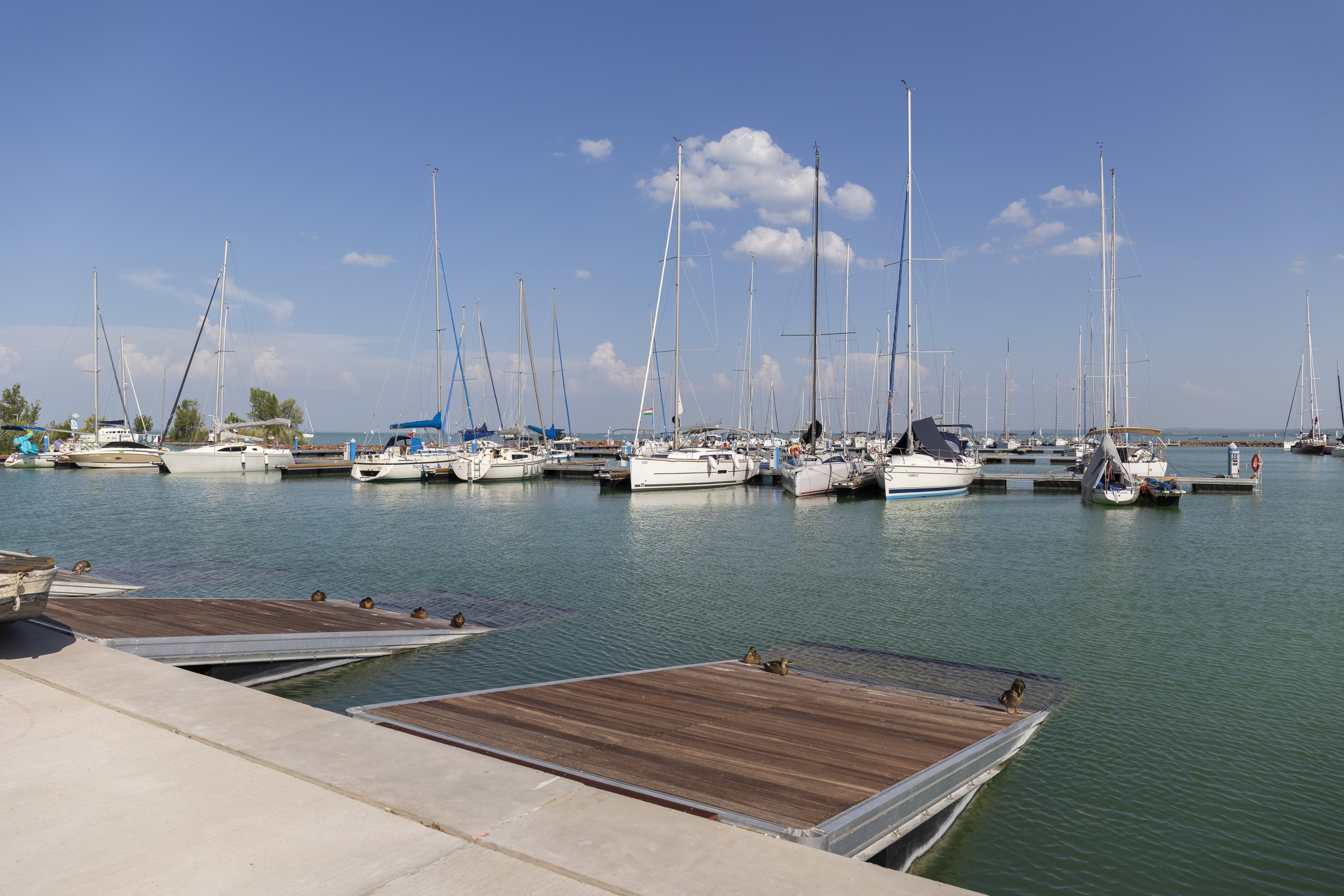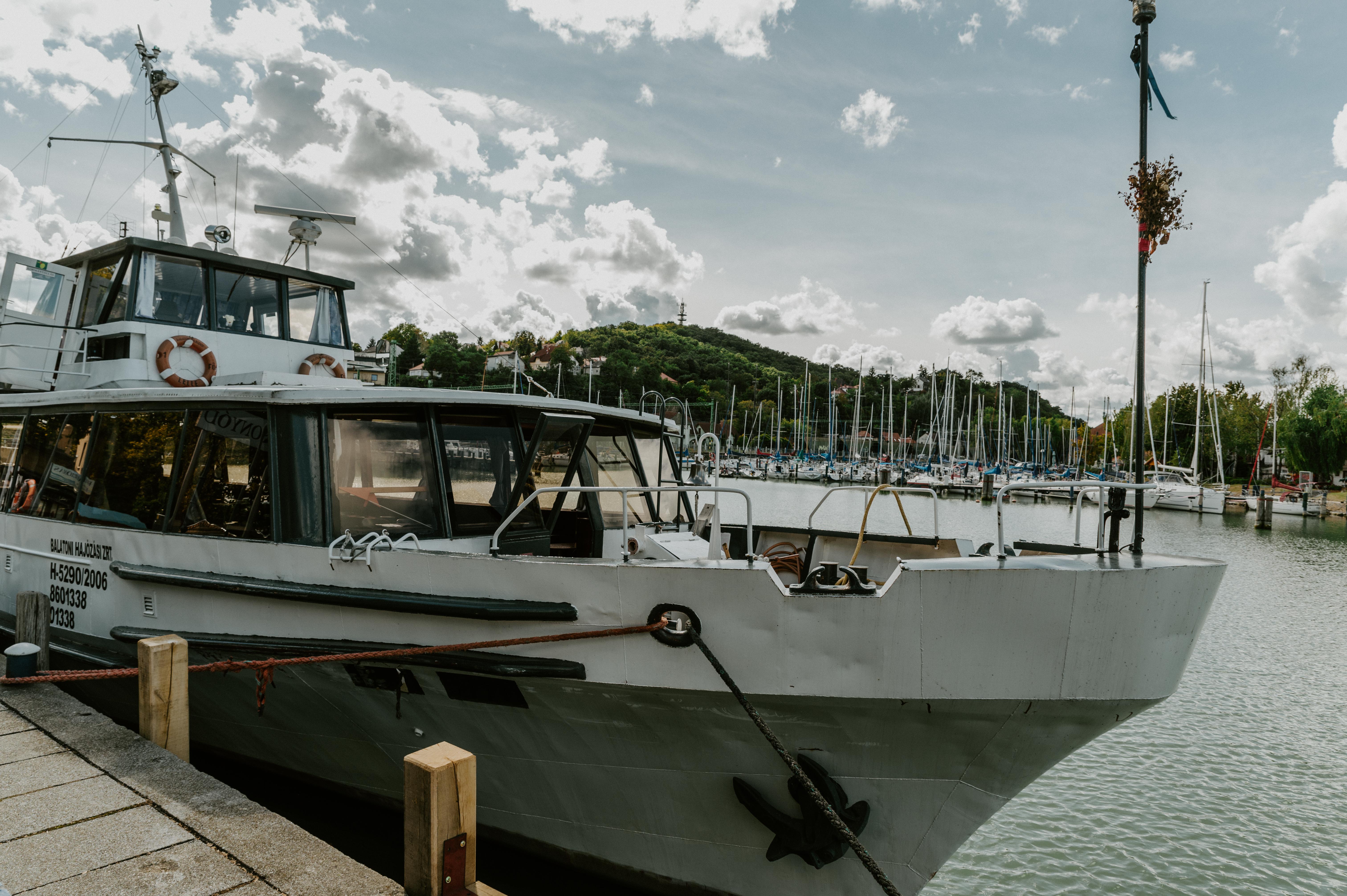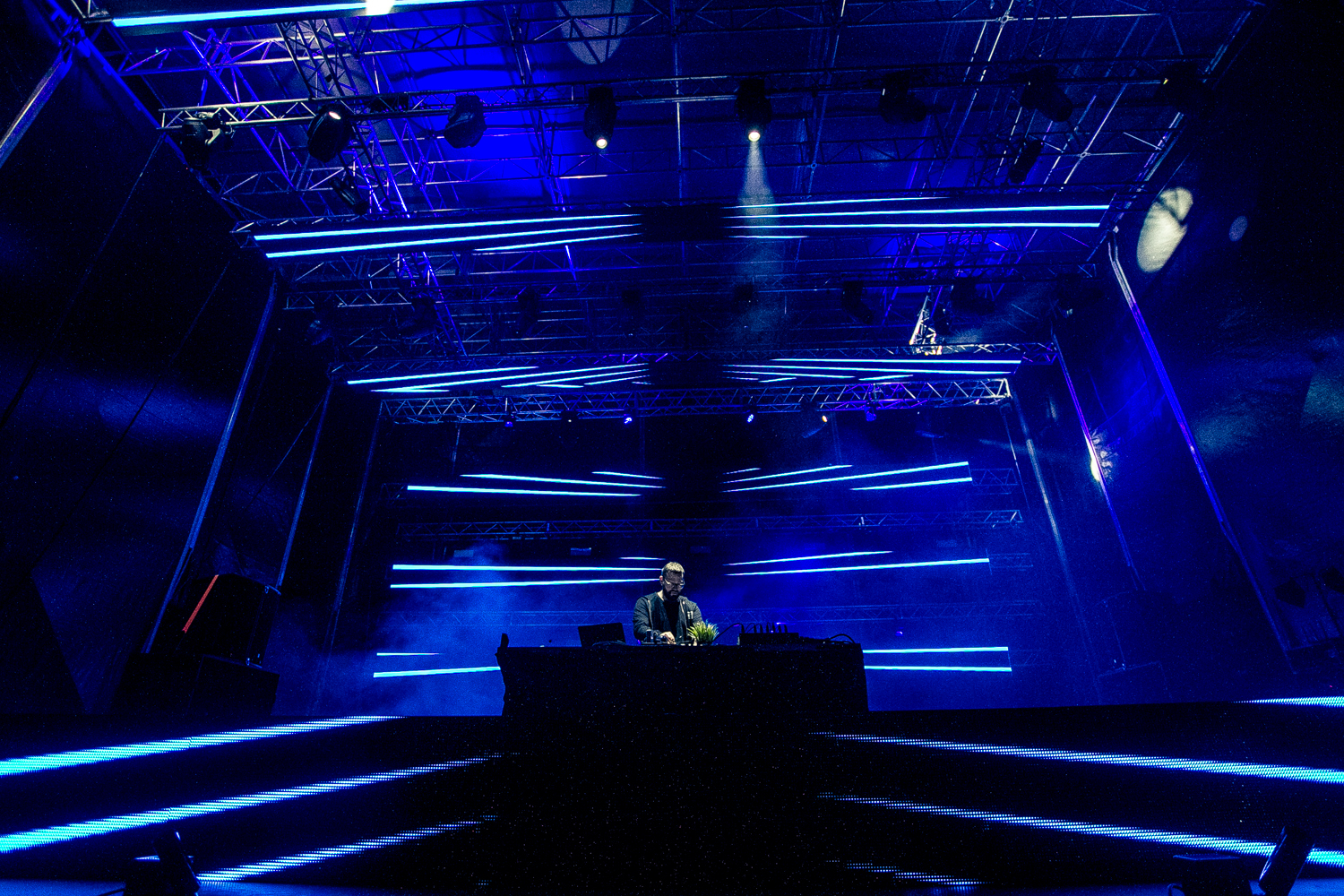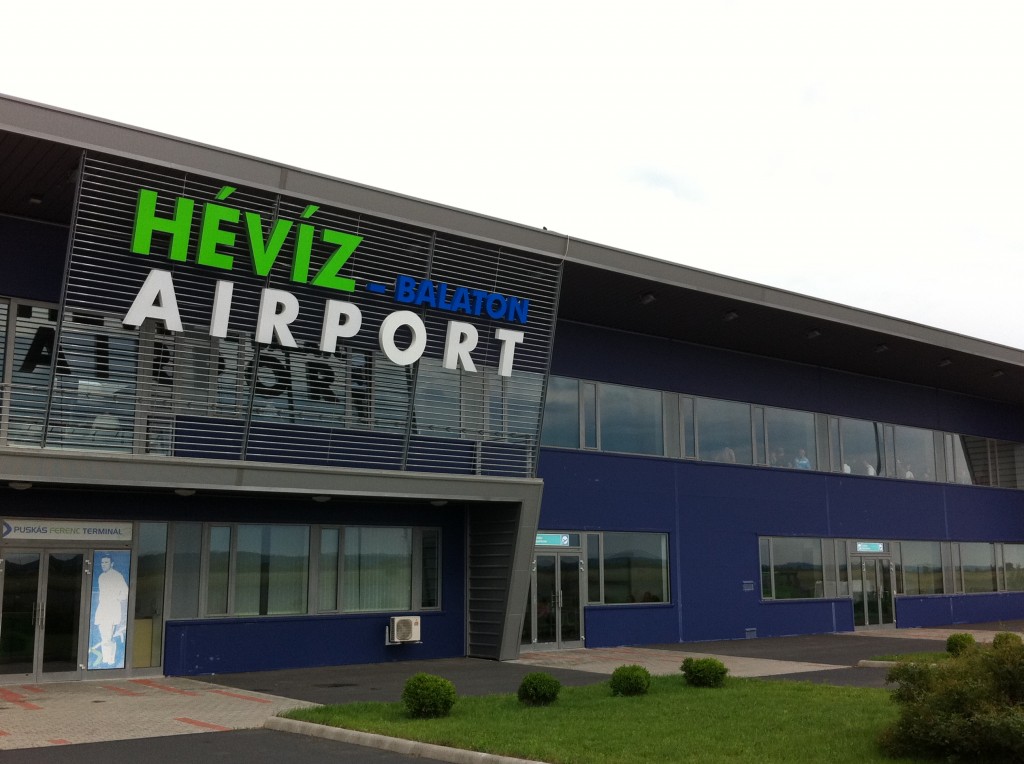The Balaton Ballooning team has flown adventurous passengers for decades, starting out first in New Zealand, and gradually expanding to Germany, Dubai and Balaton. The balloons take air three to four times a week, only twice a day, in the morning and in the evening. Gábor Kollár, the leader of the balloon company tells us why: “It’s because of the phenomena called thermals, that is, columns of air rising in a spiral-like manner, which are caused by the uneven heating of the atmosphere. Paragliders and hang gliders can make use of thermals, but they can be risky for balloons. That’s why we fly in the morning or at sunset when the temperature of the air doesn’t fluctuate as much.”
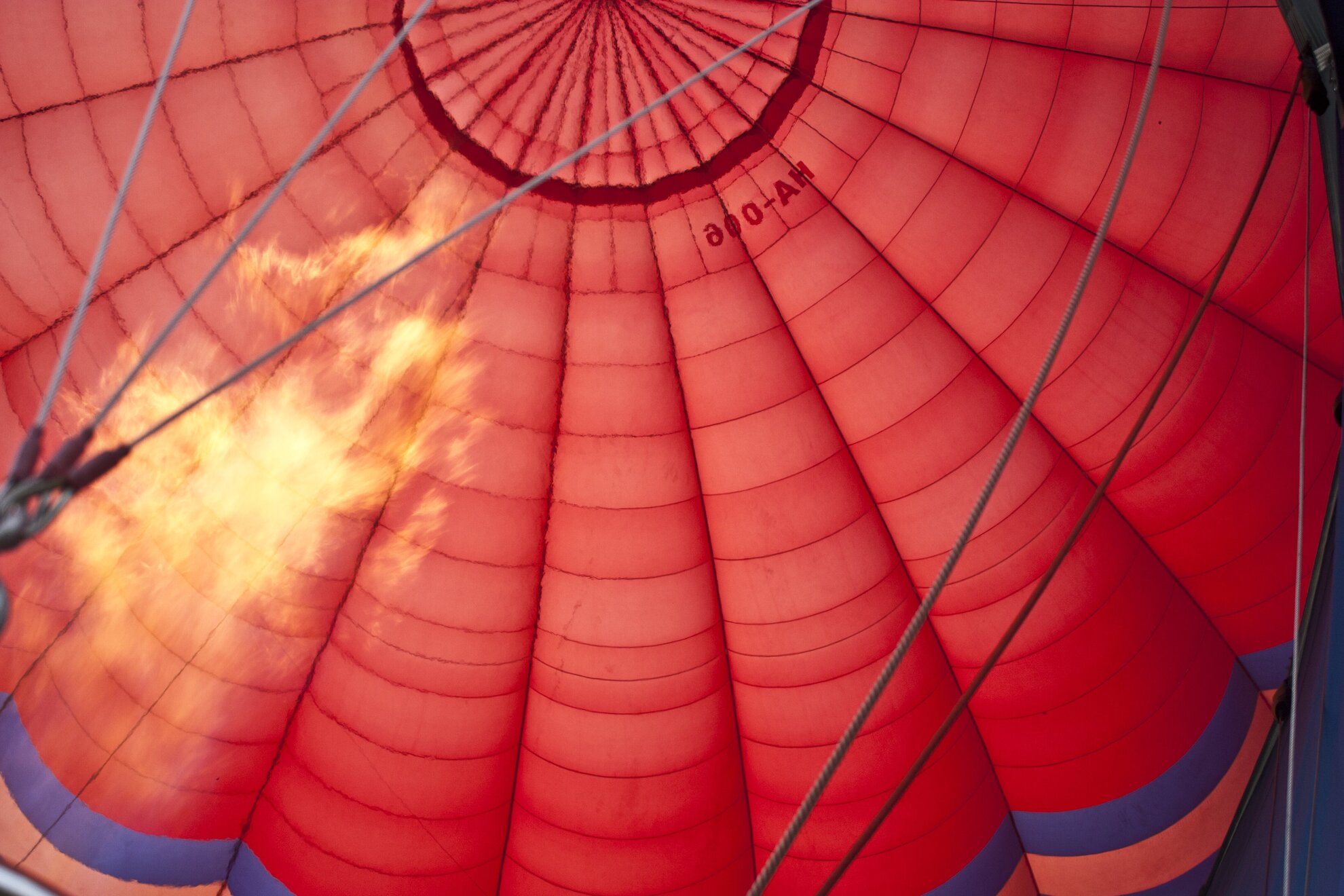
A ballooning session takes a total of three hours: if we are lucky, we can spend as much as 90 minutes in the air. A maximum of 18 people are allowed into the basket at any time, with all age groups represented from 6-year-olds to the elderly. The pilot (or, as it stands on his purple overall, Captain Attila) steers the balloon from the middle of the basket, using a few ropes and a burner that works with gas.
We didn’t dare to ask what Attila’s rank is among the pilots, but we found out after landing that he has more than 30 years of ballooning experience and 2,500 successful take-offs and landings under his belt. He’s also completed 50 jumps with a parachute before he started ballooning. It’s kind of a calling, a hobby and a lifestyle for him at the same time.
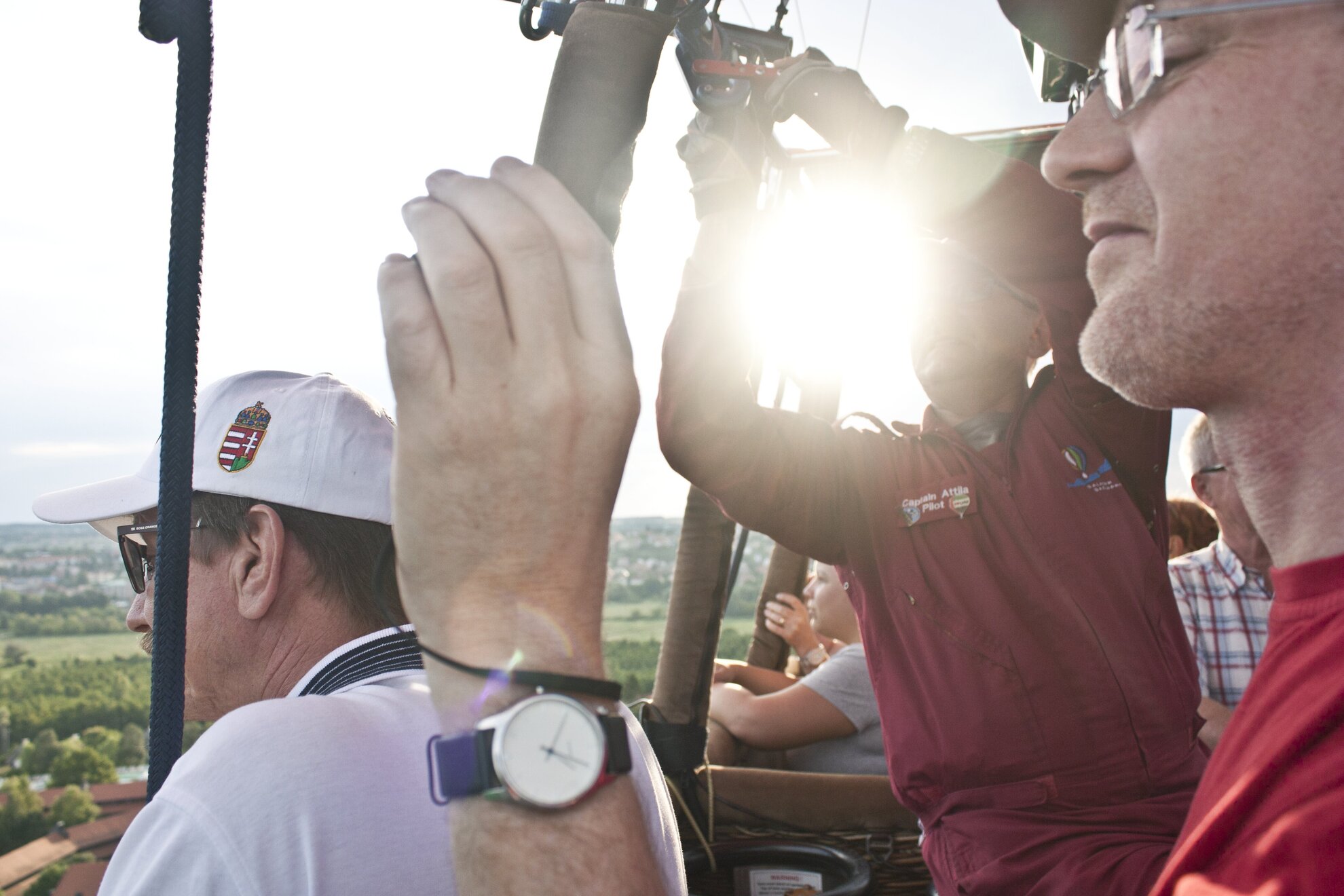
The soul of the balloon is air, hot air, to be exact. Before take-off, the balloon is inflated with two motor-powered fans just enough that it begins to float. Meanwhile, the captain is inside, arranging the ropes necessary to navigate the balloon, which only takes a few minutes; Attila could do it in his sleep. When all that is done, it’s time to light the burner, and the balloon is in the air within minutes. Now comes the part where we all jump into the basket, which is still on the ground, secured with two ropes.
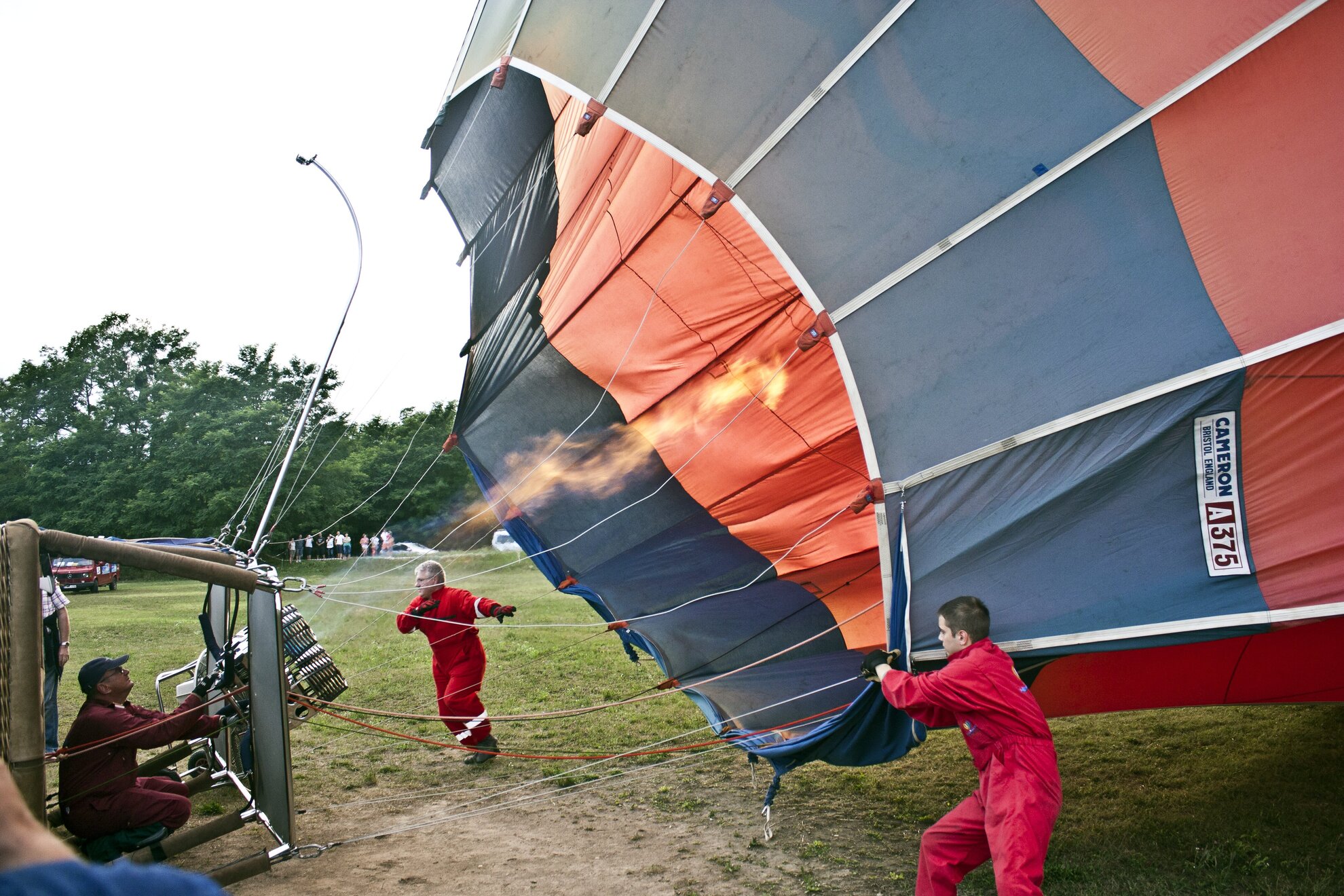
The balloon continues to rise until it reaches 1,000-1,500 metres, but it all depends on the movement of the air and the direction we want to head in. Since the way we go is determined by the wind, which is different in the various layers of the atmosphere, the balloon can only be steered to a certain extent. The pilot is only able to control whether the balloon rises, sinks or remains at the same level of elevation. We don’t learn about all this until we are up in the air, just like cameraman Marci Rév on the set of Balaton Method when he and his team flew from Almádi to the south shore. Finding out stuff like this makes our knees shake a little bit.
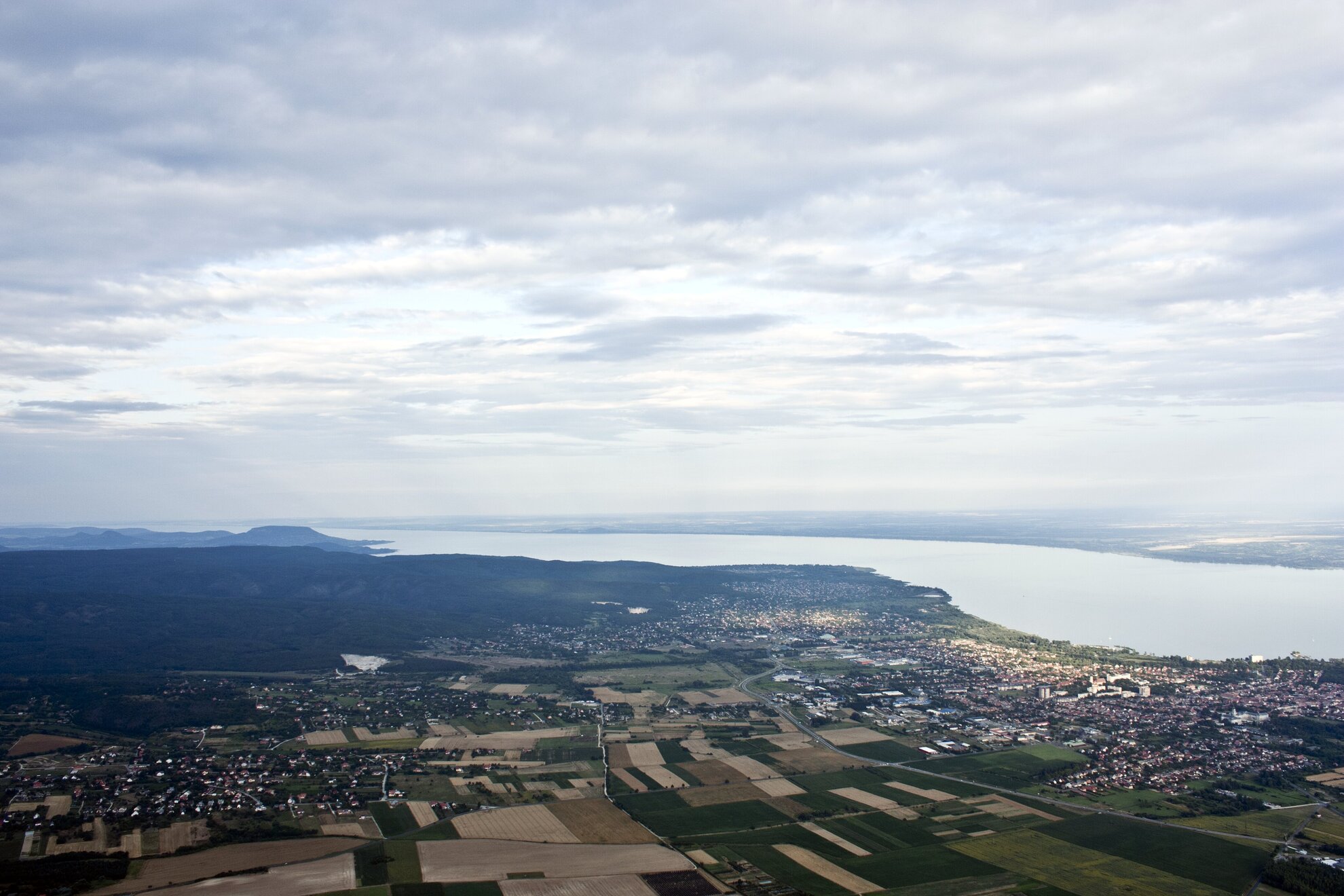
Of course, the skilled captain steers the balloon above Lake Balaton without a problem, even if it means that we have to reach 2,000 metres where the wind blows us in a favourable direction. Here, at Balaton, it may even be necessary to rise as high as 3,600 metres to reach the kind of speed that will get you from one shore to the other. No need to worry, and there is plenty to see until we are at our desired height anyway: the Lake of Hévíz, the hills of Mecsek in the distance, Kis-Balaton, and you may even spot the Budapest express passing below your feet, but this high up you’ll need an excellent pair of eyes or some binoculars to make it out properly. We keep rising, falling and flying sometimes at a speed of 4-5 km/h, other times reaching 50-60 km/h.
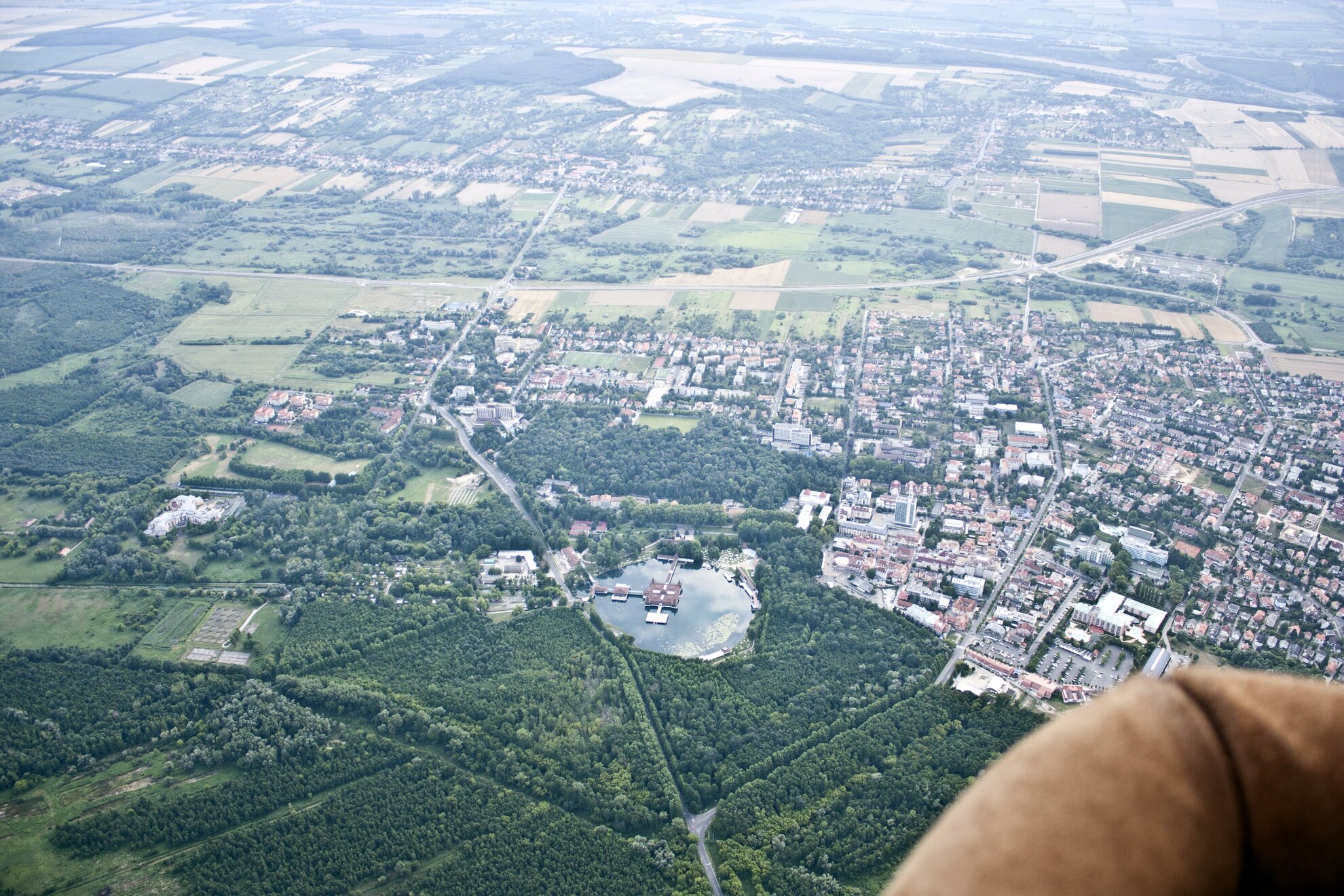
The 1.5-2 hours you spend in the air might seem a lot at first, but we must admit that the view is impossible to get enough of, and there’s always something new we spot on the ground. The sunset is the cherry on top – it has a reputation of being kitschy thanks to romantic flicks and nature photos, but it is stunning nevertheless.
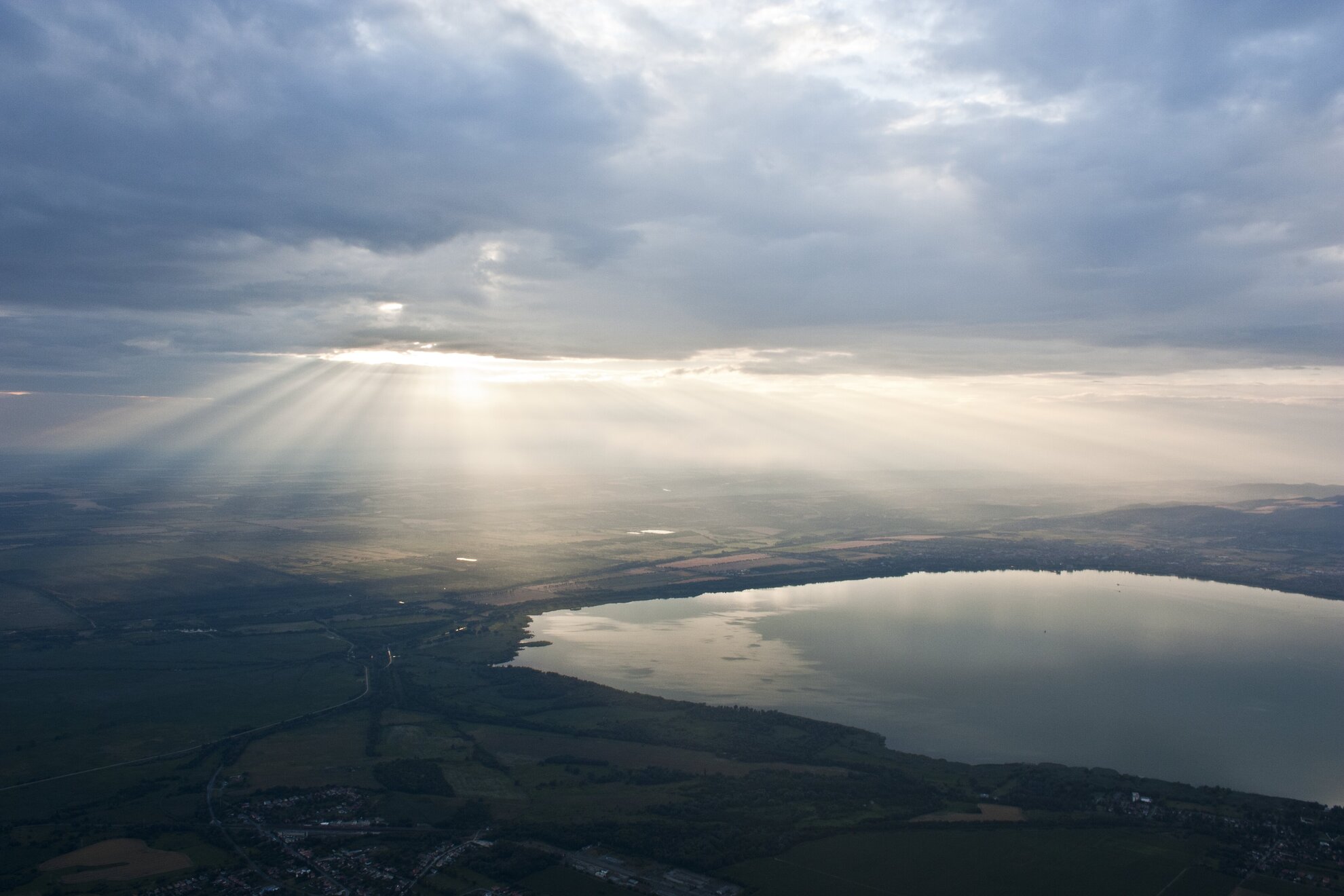
Once the balloon reaches the opposite shore, the pilot attempts landing, but the movements of the air can alter the landing spot every minute. Apparently, one of the three-tonne balloons once floated about five metres above the lake of Zalacsány for 10 minutes before a breeze came to push it on its way again. Attila’s hand doesn’t shake in situations like this – with 420 litres of propane the balloon can stay in the air approximately an hour longer than the planned duration of the journey. Passengers don’t usually panic either. So far, there has been only one case where someone didn’t realize until the balloon was flying that they were afraid of heights, so they had to sit down at the bottom of the basket until the trip was over. That passenger probably had no pictures to put in the photo album, but if you manage to stay standing, you won’t have to spend money on Balaton postcards ever again.
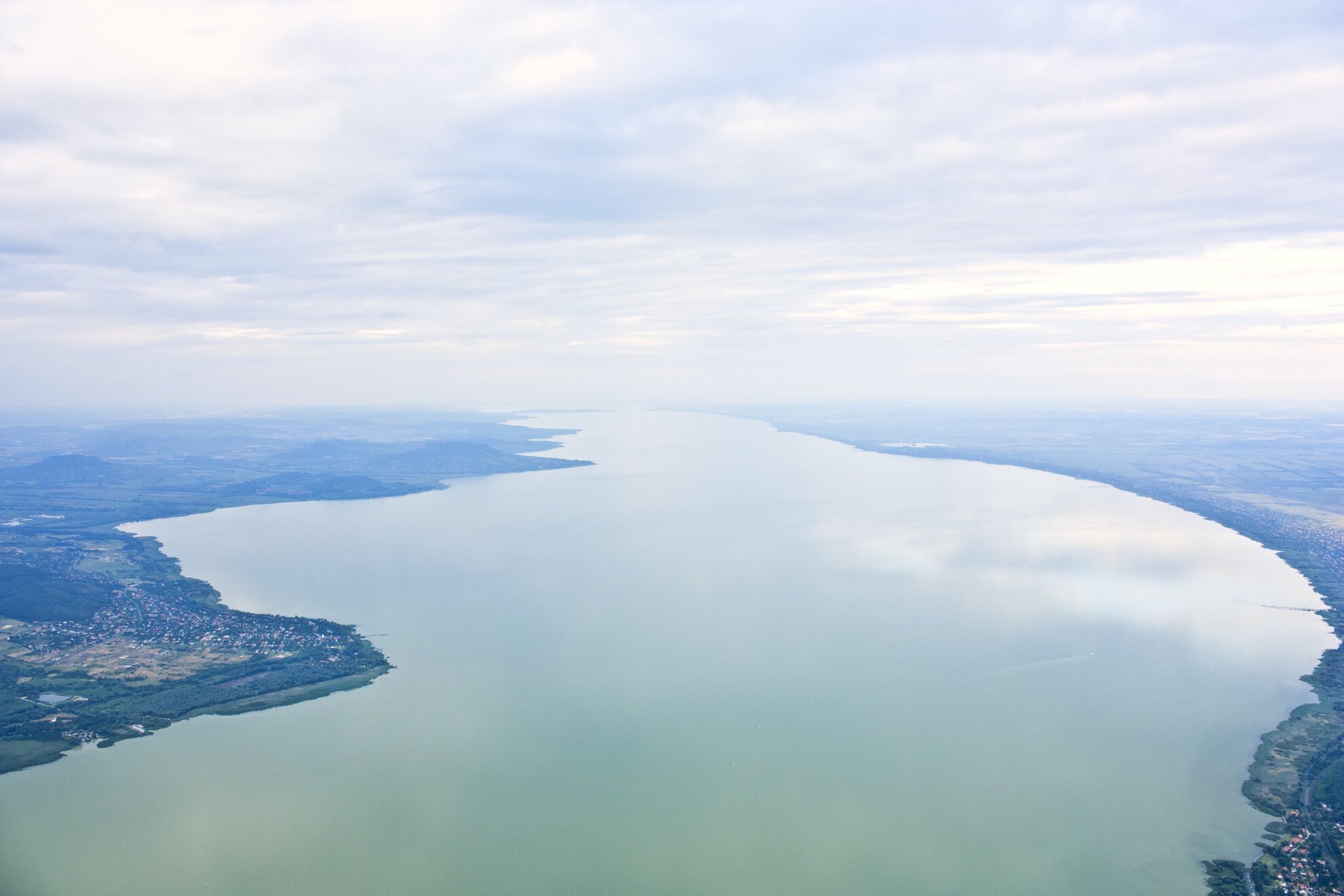
Landing is pretty much always successful on the second or third attempt; the pilot reports the coordinates as they change, so that the minivan can follow us. Once you’re on the ground, the time comes to do a bit of exercise in the form of packing up the balloon, which “only” weighs 362 kg without air, but only if you want to help, of course. Then everything falls into place, you get a glass of champagne and a certificate, and the bus comes to pick you up and take you back where you started – on the journey back, everyone finally feels at ease enough to tell a couple of good stories.
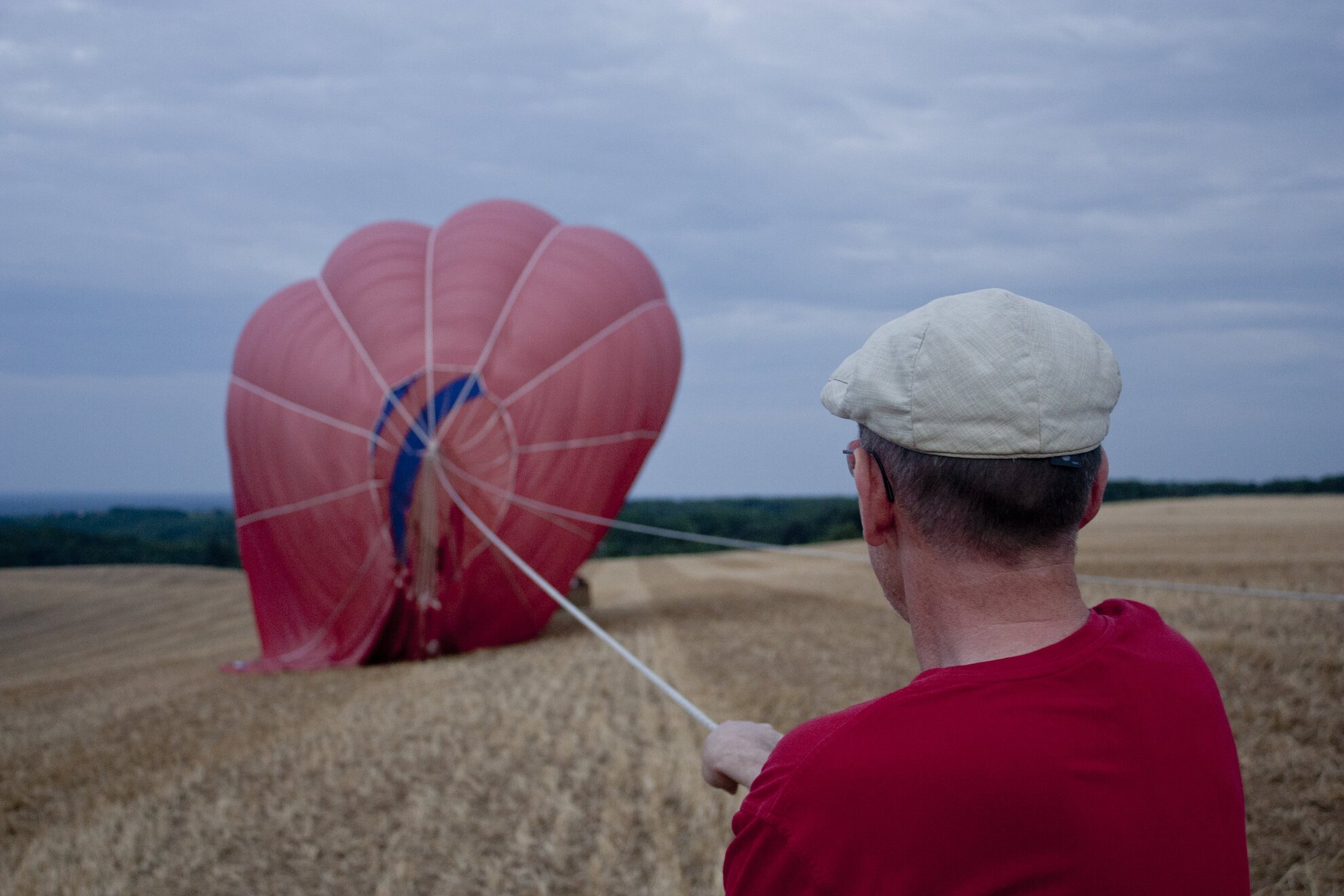
A ride in the hot-air balloon costs 40,000 HUF, but if you really want to, you can also rent it for a company event – the guys will take it anywhere in the country. It’s a thrilling, must-try activity that everyone should have on their bucket lists, and even if you don’t go ballooning ever again, for a couple of thousand forints you’ll get a copy of the video shot during your ride to keep it as a memento. This is a truly unforgettable experience powered by gas and a bit of adrenaline above Lake Balaton.

